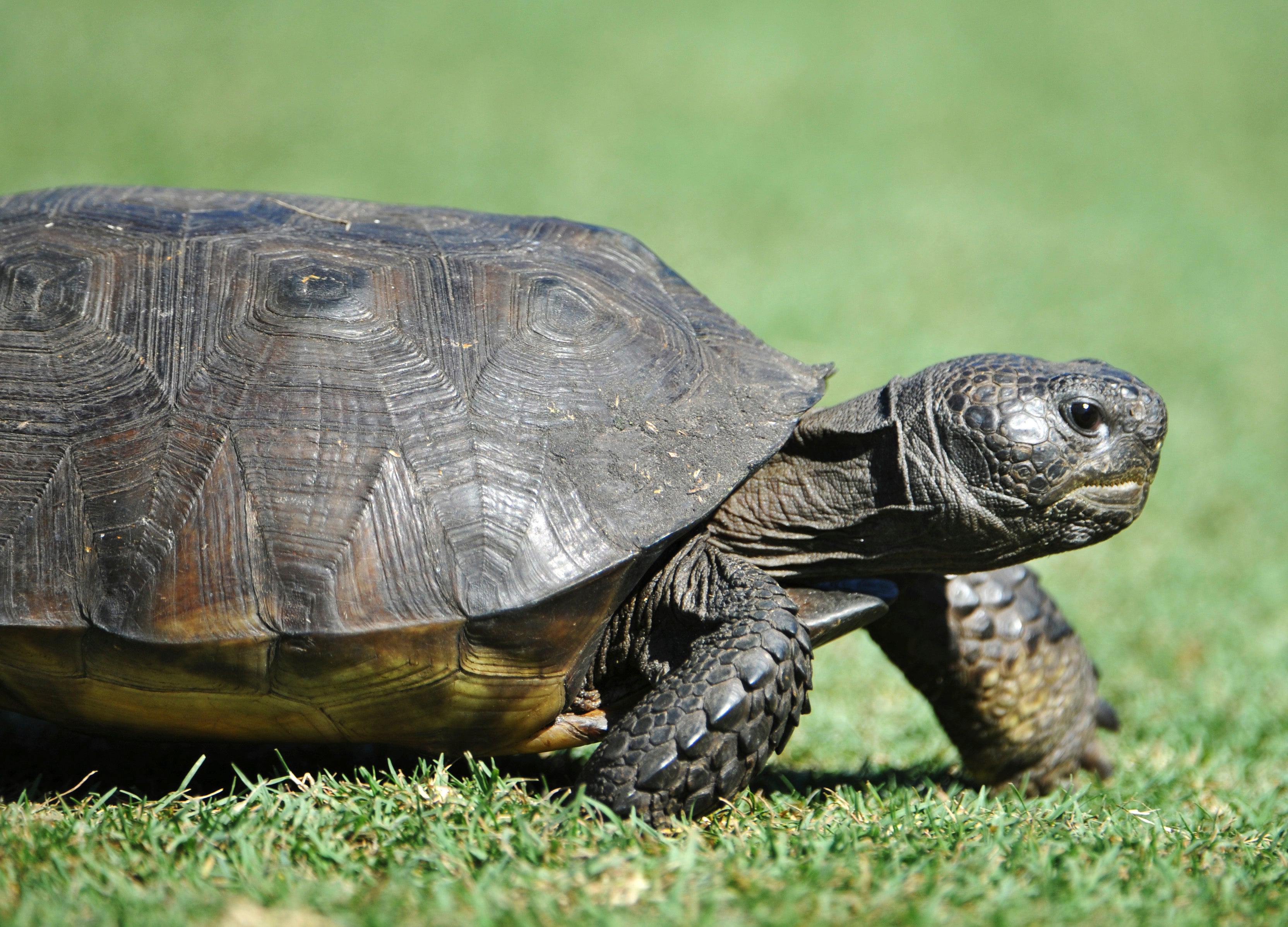Feds: Gopher tortoise not threatened over most of its range
The federal government says the gopher tortoise isn't threatened in most of its range

Your support helps us to tell the story
From reproductive rights to climate change to Big Tech, The Independent is on the ground when the story is developing. Whether it's investigating the financials of Elon Musk's pro-Trump PAC or producing our latest documentary, 'The A Word', which shines a light on the American women fighting for reproductive rights, we know how important it is to parse out the facts from the messaging.
At such a critical moment in US history, we need reporters on the ground. Your donation allows us to keep sending journalists to speak to both sides of the story.
The Independent is trusted by Americans across the entire political spectrum. And unlike many other quality news outlets, we choose not to lock Americans out of our reporting and analysis with paywalls. We believe quality journalism should be available to everyone, paid for by those who can afford it.
Your support makes all the difference.Gopher tortoises — burrowers whose extensive homes shelter many other animals — are generally doing well and need federal protection only in the small area where they were declared threatened 35 years ago, the government said Tuesday.
Thanks to extensive conservation work and recently discovered populations, Georgia's state reptile is no longer a candidate for protection in the bulk of its range: Florida, south Georgia, most of coastal Alabama and a sliver of South Carolina, the U.S. Fish and Wildlife Service said.
The decision is likely to disappoint environmental groups which sued for protection across the entire range.
The agency said small, disconnected populations remain threatened in southeastern Mississippi and bits of Louisiana and Alabama, which together make up about 12% of the tortoise's range.
“Efforts to improve conditions for the gopher tortoise have been effective, and it is important that scientists, experts and wildlife professionals continue to strategically use our best resources to help recover the gopher tortoise where it’s most vulnerable,” Leopoldo Miranda-Castro, the service’s southeastern regional director, said in a news release.
Although gopher tortoises average 9 to 11 inches (23 to 28 centimeters) long, researchers have found burrows up to 40 feet (12 meters) long. More than 360 kinds of animals have been found in occupied or abandoned burrows; the 60 vertebrate species include dusky gopher frogs,eastern indigo snakes and burrowing owls.
Logging and development are two of the gopher tortoise's biggest threats. It lives in sandy upland forests with widely spaced trees, including longleaf pine savannas that once covered an area larger than Germany. Those once-extensive forests are now down to about 5% of that area.
Longleaf pine restoration, however, is among many programs that have helped gopher tortoises, the Fish and Wildlife Service said.
Gopher tortoises were among more than 500 species listed in 2011 as possibly needing protection to settle lawsuits brought by two environmental nonprofits, Arizona-based Center for Biological Diversity and New Mexico-based WildEarth Guardians.
The Center for Biological Diversity feels strongly that the tortoises need federal protection, attorney Elise Bennett said Friday, as the decision deadline approached.
“State programs, particularly in Florida — the heart of their range — are just not working,” she said. “Florida is largely just moving them out of areas under development and into smaller and smaller habitat. And fragmentation is a problem already.”
The federal statement said Florida has 50 long-term relocation sites covering more than 120 square miles (310 square kilometers) of gopher tortoise habitat.
Many populations in the nearly 109,700-square-mile (284,100-square-kilometer) eastern area are in good condition despite threats that include climate change and sea-level rise as well as habitat loss and fragmentation, the federal agency said.
“Future projections ... show that many healthy populations will remain across the range,” it said.
In the 15,000-square-mile (39,000-square-kilometer) western section, though, populations are smaller and reproduction is lower, and they have a low ability to rebound from population or environmental changes, the agency said.
The Fish and Wildlife Service said gopher tortoises currently live on about 161 square miles (417 square kilometers) of the area and are threatened — not endangered.
“Because gopher tortoises are long-lived, they will remain on the landscape for several decades despite current and ongoing threats,” it said.
__
To follow Associated Press coverage of climate and the environment, go to https://apnews.com/hub/climate-and-environment.